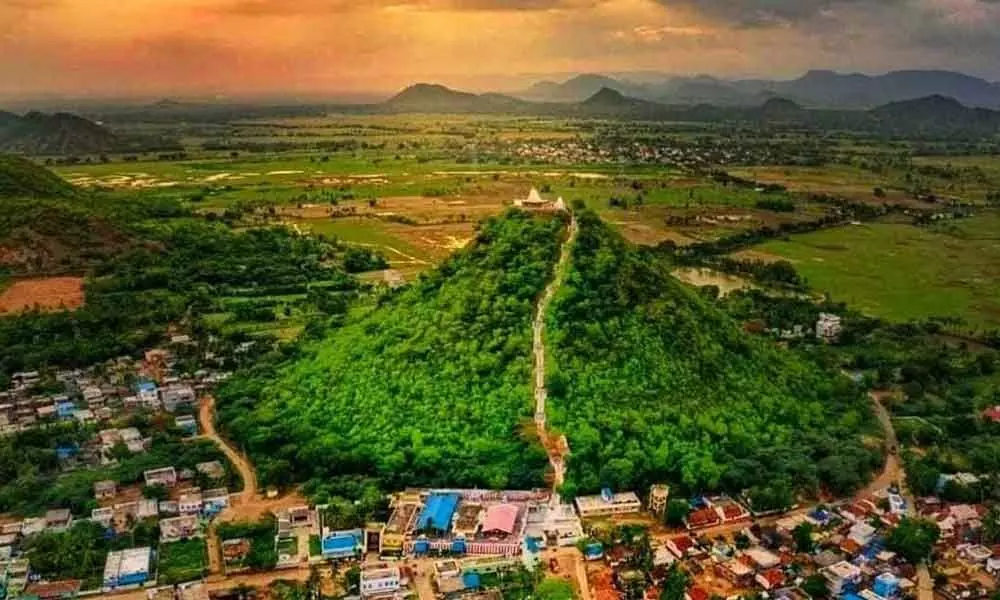
Sri Lakshmi Narasimha Swamy Temple is located in Korukonda village of Korukonda Mandal, East Godavari District, Andhra Pradesh. The presiding Deity of the temple is Lord Narasimha Swamy, accompanied by His consort Lakshmi Devi. The Deity is positioned facing the Uttarabhi mukha (northern direction). Lord Narasimha here is revered as “Satvika Narasimha,” and the sacred site is known as a Vaishnava Divya Kshetra.
The name “Korukonda” is derived from two Telugu words: “Koru,” meaning wish, and “Konda,” meaning hill. Hence, the place is often referred to as the Wish-Fulfilling Hill. Lord Narasimha is believed to be very compassionate, responding promptly to the prayers of His devotees and granting their wishes.
The temple is renowned for its serene atmosphere and picturesque surroundings. Devotees must climb 615 steps to reach the hilltop and have darshan of Lakshmi Narasimha Swamy. This 700–800-year-old temple is a remarkable example of the harmonious blend of art, nature, and spirituality.
There are two temples of Lord Narasimha on Korukonda hill. One is located on the hilltop and houses the Swayambhu (self-manifested) form of Narasimha Swamy, whose prathishta (consecration) was performed by Sage Parashara. This temple was built during the Eastern Chalukya period, also known as the Chalukyas of Vengi, under the rule of the Reddy kings—great patrons of Sanatana Dharma in the Telugu region.
The second temple, at the base of the hill, also features a Deity consecrated by Sage Parashara.
The temple complex is surrounded by lush greenery, various shrines, a cave temple, and the sacred tank ‘Konneru’. The Pandavas visited this temple and offered prayers to Lord Narasimha during their Aranyavasa (forest exile).
From the top of the Korukonda hill, devotees can enjoy a breathtaking view of the majestic Godavari River.
This temple has been a vital spiritual center for centuries, drawing devotees who participate in its special rituals and pujas.
Deity of Lord Narasimha
In the temple’s Garbhagriha (sanctum sanctorum), Lord Narasimha is depicted seated with Lakshmi Devi on His lap. He is shown in the Abhaya Mudra, symbolizing protection and fulfillment of devotees’ desires. The Deity is 9 inches tall and radiates Veera Rasa (heroic mood), with a prominent moustache and large, expressive eyes. Adi Shesha, the five-hooded serpent, is seen over His head. The Lord also holds the Shankha (conch) and Chakra (discus) on either side.
Inside the sanctum, there are Utsava Murthis (processional deities) of Lakshmi Narasimha Swamy, Sridevi-Bhudevi Sameta Narasimha Swamy, Padmanabha Swamy, and Sri Chakra Perumal.
Every night, Pavalimpu Seva (ceremonial rest) is performed for the Utsava Murthi of Shayana Lakshmi Narasimha Swamy.
Outside the sanctum, idols of other deities such as Lakshmi Devi, Andal Devi, Bhagavat Ramanuja, Adi Sesha, Manavala Mamuni, and Garuda Alzwar are also worshiped.
Significance of Sri Lakshmi Narasimha Swamy, Korukonda
One of the most important rituals at this temple is Giri Parikrama (circumambulation of the hill), which is believed to enhance spiritual growth. It is said to purify the mind, body, and soul, helping devotees overcome life’s obstacles.
Sthala Purana of Sri Lakshmi Narasimha Swamy, Korukonda
Sage Parashara performed intense penance for Lord Sriman Narayana on this hill. Pleased by his devotion, the Lord appeared as Narasimha Swamy with Lakshmi Devi. Upon the sage’s request, the Lord manifested here in a self-manifested form (Swayambhu) and resided on the hill with His consort.
Because of Parashara Maharshi’s penance on this hill, it is also known as Parashara Giri or Parashara Shaila. The hill is additionally referred to by other names such as Vedadri, Suvarna Giri, Parijatha Giri, and Konagiri.
Architecture of Sri Lakshmi Narasimha Swamy, Korukonda
Dating back to the 12th century, the temple is an architectural gem constructed in the Chalukyan style. The temple walls are adorned with intricate carvings depicting scenes from epics like the Ramayana, showcasing the exceptional craftsmanship of the era.
Several stone inscriptions (Shila Shasanams) are found around the temple premises.
The temple’s administration is managed by the Parasara Bhattars or Periya Bhattars, devout followers of Sri Ramanujacharya. This traditional system continues to this day.
Opposite the Simha Dwara (Lion Gate), there is another Deity of Lord Narasimha facing west (Pashchima Mukha), where devotees offer aarti to dispel the Arishadvargas—the six enemies of the mind: Kama (lust), Krodha (anger), Lobha (greed), Moha (attachment), Mada (pride), and Matsarya (jealousy). A Lakshmi Devi Deity is also installed in the Mukha Mandapam.
On the way to the hilltop, devotees can see the sacred Perumal Paadam (footprints of the Lord).
Festivals of Sri Lakshmi Narasimha Swamy Temple, Korukonda
Sri Swamy Vari Kalyana Mahotsavam: It is celebrated in the month of Phalguna (March) on Shukla Ekadashi. This marks the divine wedding ceremony of the deity.
Telugu New Year’s Day (Ugadi or Samvatsaradi): It is celebrated during Chaitra Maasa on Shukla Padyami (March–April), Ugadi marks the beginning of the Telugu New Year with special prayers and celebrations.
Sri Ramanuja Swamy Thiru Nakshatram: It is one of the major festivals held in the month of May, corresponding to Chittirai month and Tiruvadirai Nakshatra. This day commemorates the birth anniversary of Sri Ramanujacharya and is popularly known as Ramanuja Jayanti.
Narasimha Swamy Theertham (Swamy Vari Kalyanotsavam): It is also celebrated in Phalguna Maasa on Shukla Ekadashi, this is another significant occasion dedicated to Lord Narasimha.
Godavari Pushkara Mahotsavam: It is observed once every 12 years in Shravana Maasa, during the time when Guru (Brihaspati) enters Simha Raashi. This grand event draws lakhs of pilgrims to the riverbanks for sacred baths and rituals.
Sarannavaratri Utsavam: This nine-day festival is celebrated in Ashwin Maasa (October), starting from Shukla Padyami. Also known as Sri Lakshmi Pooja or Navaratri, it honors Goddess Lakshmi and Nava Durgas. Devotees seek blessings for health, wealth, and prosperity.
Dhanurmasa Puja: It is celebrated in Margashira Maasa (December), this is considered one of the holiest months for worship. Devotion during this period is believed to bring immense spiritual merit.
Mukkoti Mahotsavam: Held on Shukla Ekadashi during Dhanurmasa, this is a highly revered festival, often accompanied by special rituals and darshans.
Temple Timings of Sri Lakshmi Narasimha Swamy, Korukonda
The darshan timings of Sri Lakshmi Narasimha Swamy are as follows:
Morning: 5:00 AM to 12:00 PM
Evening: 3:00 PM to 8:00 PM
Best Time to Visit
The ideal time to visit Sri Lakshmi Narasimha Swamy Temple is between October and March, when the weather is pleasant and several major festivals are observed.
Nearby Places to Visit
Pushkar Ghat: It is located in Rajahmundry, a sacred ghat on the banks of the Godavari River, renowned for the Godavari Pushkaram festival.
Ramathirtham: An ancient village in Vizianagaram, home to the 1000-year-old Rama Temple situated atop Gurubhaktulakonda Hill.
Malyadri Lakshmi Narasimha Swamy Temple: A beautiful and revered temple located in Vizianagaram, dedicated to Lord Narasimha.
Dwaraka Tirumala (Chinna Tirupati): It is situated in Eluru, West Godavari district, this temple is dedicated to Lord Venkateswara Swamy.
Sri Venkateswara Alayam: A temple dedicated to Lord Venkateswara located in Vizianagaram, attracting numerous devotees year-round.
How to Reach Sri Lakshmi Narasimha Swamy Temple, Korukonda
If you plan to visit Sri Lakshmi Narasimha Swamy Temple, Korukonda, and other sacred sites, consider joining Tirtha Yatra’s Srikurmam Simhachalam Yatra, where all travel arrangements are well-managed.
However, if you prefer to travel independently, here are the available options:
By Air: The nearest airport is Rajahmundry Airport, with direct flights from Hyderabad, Bangalore, New Delhi, Kochi, Shirdi, Vizag, Vijayawada, Tirupati, and other major cities. Taxis and buses are easily available from the airport.
By Rail: Nearby railway stations include Rajahmundry Railway Station, Pithapuram Railway Station, and Kakinada Town Junction. Buses are the most economical mode of transport, though taxis and auto-rickshaws are also available.
By Road: The temple is well connected by road to major cities such as Rajahmundry, Polavaram, Pithapuram, and Kakinada. Regular bus and taxi services operate along these routes.



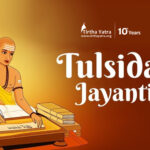
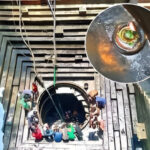
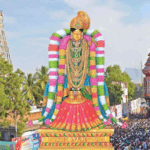


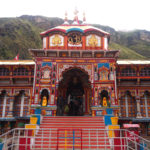
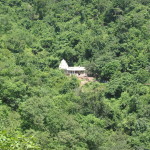
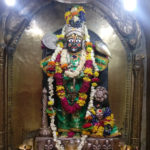
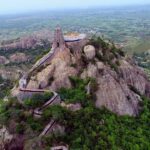
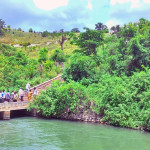
Leave a Reply